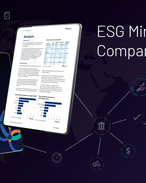PROJECT FINANCE
JMEI extension welcomed
Taxpayer-funded exploration incentive extended for four more years
First announced as a replacement of the Exploration Development Incentive, which was binned in 2017, the $105 million JMEI kicked in the 2018 financial year and was set to expire this year.
JMEI converts tax losses from greenfields exploration into credits for Australian resident investors who purchase newly-issued shares to fund field work, and is available as long as the junior has a market capitalisation below $500 million.
"Australia can provide the world with secure supply chains and manufacturing opportunities for rare earths and critical minerals that are vital in the production process of our smartphones, batteries, new tech medical appliances and our defence componentry," resources minister Keith Pitt said while announcing the extension yesterday.
Government statistics show around 80% of Australia is underexplored, and junior explorers are responsible for finding up to 70% of new deposits.
To date, the JMEI has supported 85 junior exploration companies, with over half of these companies headquartered in Western Australia, Pitt said,
Association of Mining and Exploration Companies CEO Warren Pearce said JMEI was a vital initiative for the exploration industry, and had been "highly successful" to date, leading to discoveries such as Stavely Minerals' Thursday Gossan copper-gold project in Victoria.
"The continuation of this will be critical to attracting greater private investment into exploration if we are to unlock new mineral jurisdictions from the massive unexplored areas of Australia," Pearce said.
He said it would help "restock the pipeline of new projects for future developments".
Queensland Resources Council CEO Ian Macfarlane said it was "great news" for companies who were deploying new technologies such as remote sensing, machine learning, and bio-indicators to their exploration effort.
"The last major minerals discovery in Queensland was almost 30 years ago, when Glencore's Ernest Henry copper mine was discovered near Cloncurry in 1993, so we're well overdue."
Mining technology firm Imdex also welcomed the extension.
"Three areas need to be aligned to close the gap between demand and supply: capital to fund exploration, incentive programs such as the JMEI, and technology to provide the best possible return on investment," CEO Paul House said.
JMEI credits have been capped annually, are allocated on a first come first serve basis, and no single explorer is entitled to more than 5% of the yearly cap.
The JMEI works with the Commonwealth government's $225 million Exploring for the Future initiative, and various state-based funding for greenfields drilling.

Mining Company ESG Index: Benchmarking the Future of Sustainable Mining
The Mining Company ESG Index report provides an in-depth evaluation of ESG performance of 61 of the world's largest mining companies. Using a robust framework, it assesses each company across 9 meticulously weighted indicators within 6 essential pillars.

Mining Journal Intelligence Global Leadership Report 2024: Net Zero
Gain insights into decarbonisation trends and strategies from interviews with 20+ top mining executives and experts plus an industrywide survey.

Mining Journal Intelligence Project Pipeline Handbook 2024
View our 50 top mining projects, handpicked using a unique, objective selection process from a database of 450+ global assets.

MiningNews.net Research Report 2024
Access a multi-pronged tool to identify critical risks and opportunities in Australia’s mining industry.





















